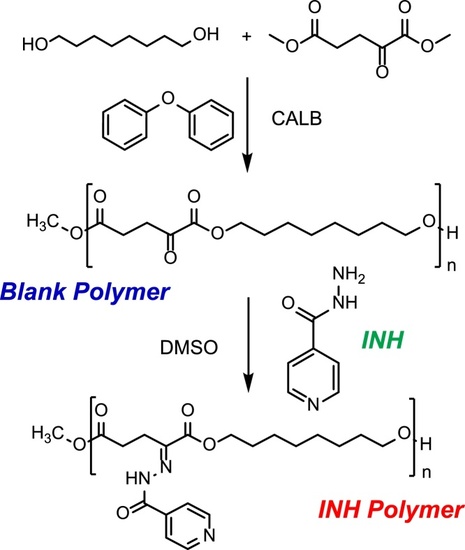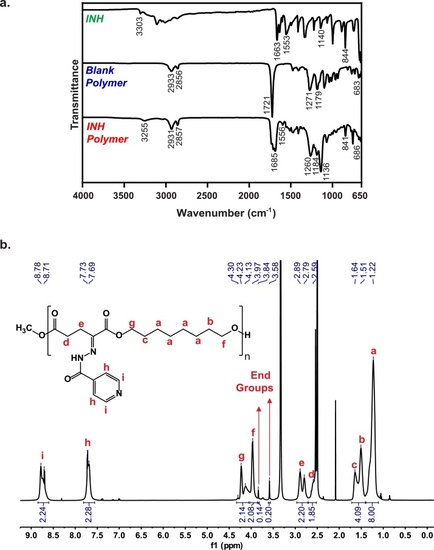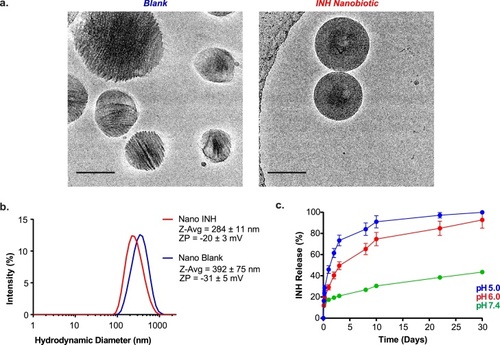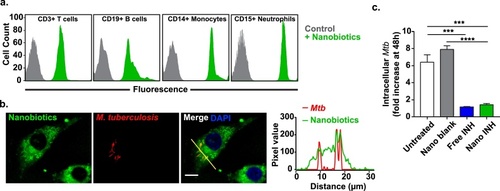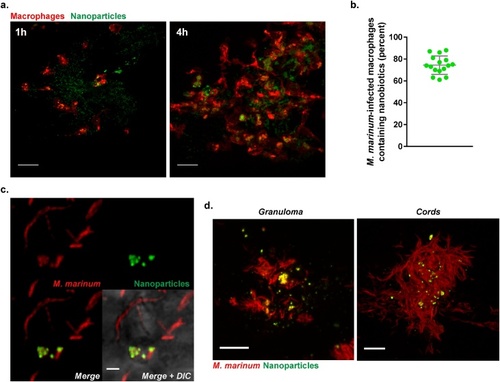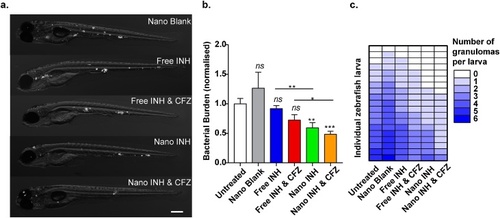- Title
-
Polymeric nanobiotics as a novel treatment for mycobacterial infections
- Authors
- Batalha, I.L., Bernut, A., Schiebler, M., Ouberai, M.M., Passemar, C., Klapholz, C., Kinna, S., Michel, S., Sader, K., Castro-Hartmann, P., Renshaw, S.A., Welland, M.E., Andres Floto, R.
- Source
- Full text @ J. Control Release
|
Synthesis of an α-keto polyester by (trans)esterification reaction catalysed by CALB and conjugation to isoniazid (INH). |
|
Characterization of polymer-drug conjugates. |
|
Characterization of polymeric nanobiotics |
|
Nanobiotic uptake by phagocytic cells and |
|
PHENOTYPE:
|
|
Effect of nanobiotics at 3 days post infection on zebrafish infected with fluorescently-labelled |

